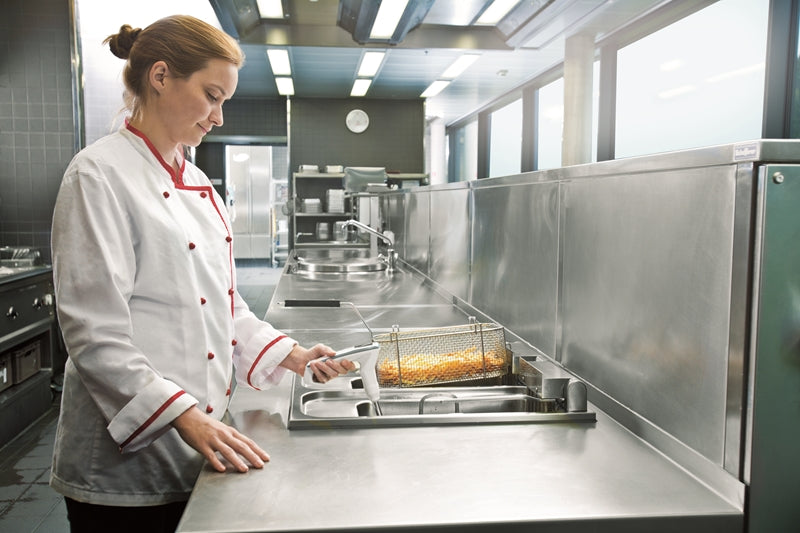
Deep-frying is fast and efficient, making it a perfect way to quickly provide food to hungry customers. If you use the right equipment with the correct maintenance, it is an easy and reliable process for businesses to enjoy its benefits - set a timer, and you can rely on the fryer to do all the hard work.
When it comes to cooking oil and deep frying, the importance of the medium used to cook the food cannot be understated. Cooking oil that meets specific standards can be reused several times. This lowers the cost associated with operating a fryer without impacting its flavour or the nutritional content of the food served.
Why Must Cooking Oil Be Monitored And Tested?
Cooking oil degrades and changes as it's used to prepare food. According to the academic journal “Current Developments in Nutrition” the chemical compound of the oil undergoes oxidation, polymerisation and hydrolysis as it is utilised. The number of polar compounds, such as alcohols and free fatty acids, rises over time. By measuring the polar compounds, operators have access to a straightforward and useful method to determine the quality of cooking oil.
“Food Safety Magazine” explained in depth how a variety of factors influence the degradation of cooking oils. These include temperature and frying time, food coating, moisture and oil composition. No matter what the cause, cooking oil will eventually reach a point where it should no longer be used. Spent oil can cause health issues for customers as well as create a less pleasing meal or snack due to discolouration, increased oil retention of the food and negative changes in flavour.
How Can You Save Money By Testing Cooking Oil Regularly?
By monitoring and testing cooking oil, commercial kitchens, supermarkets, restaurants and many similar businesses can ensure they change their oil before it reaches a state that can negatively affect the outcome of the food product. Simultaneously, they are able to avoid preemptively replacing oil, therefore saving money. While cooking oil may not be the most expensive resource by weight in the food service world, due to the volume used to fry food and the large quantities needed for safe and effective operation costs can add up quickly.
The correct approach to testing allows for the most efficient oil replacement schedule by only discarding old oil when necessary, businesses are able to reduce their expenses in terms of purchasing oil and the valuable employee time needed to drain, dispose of and add new oil, as well as clean the equipment and ensure it remains in good working order.
What Devices Are Used To Test Cooking Oil?
Testing the total polar molecules (TPM) in cooking oil provides a clear indication of when is the perfect time to discard oil and replace it with a new and clean alternative. Instruments such as the Testo 270 cooking oil tester provide a simple and dependable way to address the quality of cooking oil. Staff can solely use the instrument to test the TPM content of cooking oil and change it at the right time… not too early, and not too late.
Testo NZ is here to supply the instruments that enable your business to make informed, data based decisions. These decisions can drive efficiency, productivity, save money and adhere to government regulations and internal best practises. To find out more, get in contact with the expert team at Testo New Zealand today.
